-
Recent Posts
- Trump’s “Big Beautiful Bill” Is a Grotesque Giveaway to Fossil Fuel Billionaires While Adding $3.3 Trillion to Nation’s Debt
- Senator Chris Murphy Charges that Trump “Has Opened a Channel for Bribery”
- Congressman Casten: Trump’s Assault on the Rule of Law Is Causing Capital Flight Out of U.S. by Foreign Investors
- Trump’s Approval Rating Drops to 80-Year Low; IMF Says U.S. Tariffs Now Exceed the Highs During the Great Depression
- Nasdaq Has Lost More than 3,000 Points Since Trump’s First Full Day in Office in 2025; the Pain Has Barely Begun
- The Bond Crisis Last Week Was a Global No-Confidence Vote in U. S. President Donald Trump
- Trump’s Tariff Plan Guts $5 Trillion in Stock Value in Two Days; Senator Warren Calls for Emergency Action Before Markets Open on Monday
- Trump’s Attacks on Big Law, Universities, and the Media Have a Common Goal: Silence Dissent Against Authoritarian Rule
- Trump Administration Gives All Clear to Laundering Money through Shell Companies and Bribing Foreign Officials
- Four Megabanks on Wall Street Hold $3.2 Trillion in Uninsured Deposits – Which May Explain Senator Schumer’s Pivot to the GOP to Stop a Government Shutdown
- Here’s What Came Crashing Down Yesterday for Trump’s “Genius” Guy, Elon Musk: Tesla Stock, Access to Twitter (X), His Years of Secret Calls with Putin
- After Banning the Associated Press, Trump Is Now Targeting Specific Journalists That He Wants to See Fired
- Closely Watched Atlanta Fed Model Predicts Negative U.S. Growth in First Quarter
- Trump’s Gangster Diplomacy Makes Front Page Headlines Around the Globe
- Who Benefits Alongside Elon Musk If He Succeeds in Killing the CFPB: the Megabanks on Wall Street that Underwrite His Tesla Stock Offerings
- In Trump 1.0, the State Department Used Taxpayer Money to Publish a Book Elevating Elon Musk to a Superhero; It Was Funded by USAID, the Agency Musk Wants to Quickly Shut Down
- News Host Joy Reid Raises Threat of Trump Selling U.S. to Putin; Ten Days Later Her Show Is Cancelled
- Elon Musk’s DOGE Appears to Be Violating a Court Order; It Has Taken Down Hundreds of YouTube Videos that Educate Americans on How to Avoid Being Swindled
- Barron’s Releases Audio of Jamie Dimon Cursing Out His Workers at a Town Hall, as Dimon Plans to Dump Another One Million JPM Shares
- There’s One Federal Investigative Agency that Neither Trump nor Elon Musk Can Touch: It Just Opened an Investigation into DOGE
- Elon Musk’s Companies Were Under Investigation by Five Inspectors General When the Trump Administration Fired Them and Made Musk the Investigator
- Donald Trump Gives the Greenlight to Goldman Sachs and JPMorgan Chase to Return to Bribing Foreign Officials
- After Tech Geeks Built a Back Door to Loot Billions from FTX, Republicans Refuse to Investigate What Elon Musk’s Tech-Squad Did Inside the U.S. Treasury’s Payment System
- Former Prosecutor, Now U.S. Senator, Informs Tesla That CEO Musk May Be Violating Federal Law and to “Preserve All Records”
- Trump’s Hedge Fund Guy Is Now Overseeing the U.S. Treasury, IRS, OCC, U.S. Mint, FinCEN, F-SOC, and the Consumer Financial Protection Bureau
- As Elon Musk Begins Shutting Down Payments to Federal Contractors, a Strange Money Trail Emerges to His Operatives Inside the U.S. Treasury’s Payment System
- JPMorgan Chase Charged by Yet Another Internal Whistleblower with Cooking the Books
- We Asked Google’s AI Search Model, Gemini, Questions About the Fed and Wall Street Megabanks: It Got the Answers Dead Wrong
- With Trump and Melania’s Crypto Coins Likely to Raise Legal Challenges, Why Didn’t Trump Fire the SEC’s Inspector General in His Purge of IGs?
- Fossil Fuel Industry Could End Up Paying Tens of Billions for LA Wildfires and Deceiving the Public on Climate Change for Decades
- It’s Being Called the Biggest Grift by a President in U.S. History: Trump and First Lady Launch their Own Crypto Coins
- Trump Plans to Install a Fracking CEO to Head the Energy Department and Declare a National Emergency on Energy to Gain Vast Powers
- Fossil Fuel Money Played a Role in the Los Angeles Fires and the Push to Install Pete Hegseth as Secretary of Defense
- When It Comes to Wealth Retention in Retirement, Concrete May Be the New Gold
- Wall Street Watchdog Warns “Clock Is Ticking on a Coming Catastrophic Financial Crash”
- Wall Street Is Sending the Same Message to Americans on Fossil Fuel Financing that It Sent on Cigarettes: Drop Dead
- In a Six-Week Span, this Dark Pool with a Curious Past Traded 3.7 Billion Shares
- Wall Street’s Lobby Firm Hired Eugene Scalia of Gibson Dunn to Sue the Fed for Jamie Dimon
- Postmaster General Louis DeJoy Made $561,051 in Compensation in 2024, as Mail Costs Spiked and Delivery Deteriorated
- Fed Chair Jay Powell Sends a Bold Message to Trump and Tanks the Dow by 1123 Points
- The Head of Fixed Income at T. Rowe Price Makes the Scary Case for the 10-Year Treasury to Spike to 6 Percent
- $663 Billion in Cash Assets Have Gone Poof at the Largest U.S. Banks
- Donald Trump to Ring Bell at New York Stock Exchange Today as Hit List Posters Appear in Manhattan Targeting Wall Street CEOs
- Trump Has a Slush Fund to Prop Up the Dollar – Will He Use It to Prop Up Bitcoin Instead?
- A CEO Assassination; a Billionaire Heiress/NYPD Commissioner; a Secret Wall Street Spy Center – Here’s How They’re Connected
- Despite More than 1600 Tech Scientists Signing a Letter Calling Crypto a Sham, Trump Names a Crypto Cheerleader for SEC Chair
- The Fed Rings a Warning Bell: Hedge Funds and Life Insurers Are Reporting Historic Leverage
- Trump’s Nominee for FBI Director, Kash Patel, Has Businesses Financially Intertwined with Trump
- Donald Trump Is at Risk of Getting Named in a Fossil Fuels Conspiracy Lawsuit
- Trump Is Having Difficulty Getting a Lawyer to Accept the Nomination for SEC Chair: Here’s Why
Search Results for: Jamie Dimon
Despite Being Called the Madoff of Crypto, New York Times Features Sam Bankman-Fried at $2500 a Person Event Today

By Pam Martens and Russ Martens: November 30, 2022 ~ You can’t make this stuff up. After promoting the false story that there were weapons of mass destruction in Iraq and pushing the U.S. into a deadly and costly war through its reporter, Judith Miller; and using its editorial board to shill for the repeal of the Glass-Steagall Act to advance the greedy Wall Street ambitions of Citigroup kingpin Sandy Weill, which ended up taking down the U.S. economy in 2008; the New York Times now appears determined to rehabilitate the reputation of the disgraced Sam Bankman-Fried, Co-Founder and recently ousted CEO of the bankrupt crypto exchange, FTX. Bankman-Fried is being investigated on multiple continents, including North America, for stealing customer assets and looting his private investors. He has been compared, in headlines around the globe, to Bernie Madoff and his Ponzi scheme. Reuters reported that Bankman-Fried had moved as much as … Continue reading
JPMorgan Chase Quietly Settles Whistleblower Case Involving Charges of Keeping Two Sets of Books and Improper Payments to Tony Blair

By Pam Martens and Russ Martens: October 26, 2022 ~ It was a lawsuit that should have made front page headlines in every major newspaper in America and on the evening television news. Instead, as we predicted, it was quietly settled on Monday, just 10 business days before a trial was scheduled to begin. The dollar amount of the settlement was not disclosed. Yesterday, Wall Street’s paper of record, the Wall Street Journal, devoted a mere 299 words to the settlement and the details of the case. The lawsuit was filed in the federal district court for the Southern District of New York – a court system where mega Wall Street banks have a long history of evading justice. The plaintiff in the case is Shaquala Williams, an attorney and financial crimes compliance professional with more than a decade of experience at multiple global banks. The defendant is JPMorgan Chase – … Continue reading
Atlanta Fed President Bought Low and Sold High in 2020 as the Fed Bailed Out Wall Street; Then He Failed to Report those Trades
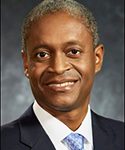
By Pam Martens and Russ Martens: October 17, 2022 ~ It was one year ago that Wall Street On Parade raised a multitude of red flags about Raphael Bostic, the President of the Atlanta Fed. We have published the entirety of that article below so that our readers can see just how long it took both Bostic and the Atlanta Fed to come clean with the American people about his trading on Wall Street. On Friday, Bostic released a seven-page statement in which he owned up to the following: failing to list a multitude of trades that were conducted on his behalf by trading firms on Wall Street over a period of five years; failing to properly report income on his assets on his financial disclosure forms; trading during blackout periods when trading was barred by the Federal Reserve; providing inaccurate values on his financial disclosure forms. The upshot was that … Continue reading
NYS Attorney General Documents a Decade of “Staggering” Fraud by Donald Trump, the Man Allowed to Run the U.S. Government from 2017 to 2020
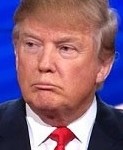
By Pam Martens and Russ Martens: September 22, 2022 ~ Yesterday, the New York State Attorney General, Letitia James, filed a 222-page lawsuit against former President Donald Trump, the Trump Organization, his three adult children (Donald Jr., Ivanka and Eric), and two company executives, Allen Weisselberg and Jeffrey McConney. The lawsuit is the culmination of a three-year investigation and documents in meticulous detail a “staggering” pattern of fraud from 2011 through 2021. A sampling of the more than 200 instances of fraud alleged by the New York State Attorney General is as follows: “Relying on objectively false numbers to calculate property values. For example, Mr. Trump’s own triplex apartment in Trump Tower was valued as being 30,000 square feet when it was 10,996 square feet. As a result, in 2015 the apartment was valued at $327 million in total, or $29,738 per square foot. That price was absurd given the fact … Continue reading
JPMorgan Chase, Morgan Stanley and Wells Fargo Flunk a Test Measuring their Support for American Democracy
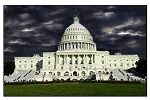
By Pam Martens and Russ Martens: September 15, 2022 ~ The nonpartisan watchdog group, Accountable.US, has released the results of an investigation into how committed to democracy the 100 largest corporations in America are. The corporations were graded on support for voting rights, the electoral process, and American democracy. The results were provided in an interactive resource called the American Democracy Scorecard. Researchers looked at 14 key criteria. Seven elements of the criteria involved making pro-democracy statements, being affiliated with pro-democracy organizations, and taking other pro-democracy actions. Seven other criteria involved corporate contributions to elected officials who are undermining democracy and voting rights. Three of the largest mega banks on Wall Street, JPMorgan Chase, Morgan Stanley, and Wells Fargo, flunked the democracy test, each receiving a score of “F.” Goldman Sachs received a “D.” Bank of America and Citigroup received a “B” grade, but, clearly, that was based on very recent … Continue reading
The Market Is Freaking Out Over the Potential for a Perfect Storm: Fed Tightening, Shaky Mega Banks, and a Sharp Decline in Household Wealth
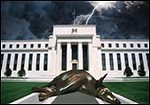
By Pam Martens and Russ Martens: September 14, 2022 ~ The Dow Jones Industrial Average dropped 1,276 points yesterday for a decline of 3.94 percent. The Dow’s losses were outpaced by the tech-heavy Nasdaq, which gave up 632.8 points for a drop of 5.16 percent. The sharp selloff was triggered by the 8:30 a.m. report yesterday morning, an hour before the opening bell of the New York Stock Exchange, that inflation had come in hotter than expected in August. Wall Street had been looking for a 0.1 percent decline in the Consumer Price Index (CPI). Instead, the August reading showed an increase of 0.1 percent. The year-over-year rate slowed to 8.3 percent from 8.5 percent in July. The Fed is set to meet next Tuesday and Wednesday and with the CPI number coming in hotter than anticipated, there is now talk of the Fed slamming on the brakes more than anticipated, … Continue reading
President Biden, a New Book and a Poll Say American Democracy Is Under Grave Threat

By Pam Martens: September 7, 2022 On Thursday evening, September 1, President Joe Biden addressed the nation from Philadelphia, the second location of the U.S. Capitol in its early years. During his remarks, Biden spoke these words: “Too much of what’s happening in our country today is not normal. Donald Trump and the MAGA Republicans represent an extremism that threatens the very foundations of our republic. “Now, I want to be very clear — very clear up front: Not every Republican, not even the majority of Republicans, are MAGA Republicans. Not every Republican embraces their extreme ideology. I know because I’ve been able to work with these mainstream Republicans. “But there is no question that the Republican Party today is dominated, driven, and intimidated by Donald Trump and the MAGA Republicans, and that is a threat to this country.” The two most important words in this excerpt from Biden’s remarks are the … Continue reading
JPMorgan Chase’s Stock Is a Dog – Put on a Leash by the Fed and Down 28 Percent Year-to-Date
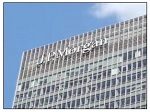
By Pam Martens and Russ Martens: August 30, 2022 ~ According to YCharts (give the chart time to load) since January 1, 2017 through December 31, 2021 – a span of five years – JPMorgan Chase has spent a total of $84.312 billion buying back its own stock. In eight of those quarters, it spent more than $5 billion buying back its own shares. In the three quarters when JPMorgan Chase was on a secret feeding tube from the Fed via the Fed’s emergency repo loans and other emergency programs, the bank bought back the most stock in its history according to YCharts: $6.949 billion for the quarter ending September 30, 2019; $6.751 billion for the quarter ending December 31, 2019; and $6.517 billion for the quarter ending March 31, 2020. Now, the unthinkable has happened. The Fed has actually put JPMorgan Chase on a leash. As a result, the bank … Continue reading
JPMorgan Chase Failed to Disclose Its Role in Financing a $1.8 Billion Loan to a Ski Resort Deal Tied to an “Independent” Board Member

By Pam Martens and Russ Martens: August 22, 2022 ~ Last week the Federal Reserve announced that it was banning Ronald D. Paul for life from the banking industry. Paul is the former Chairman and CEO of EagleBank, a small bank operating 20 offices in Maryland, Washington, D.C. and Virginia. The Fed also announced it was fining EagleBank $9.5 million for violating the Board’s “insider lending regulation,” over EagleBank extending “credit totaling nearly $100 million to entities that Paul owned or controlled, including certain family trusts, without making appropriate disclosures….” This is just one more case of the Federal Reserve going after the little fish while taking a hands-off approach to the killer whales – the megabanks on Wall Street. For more than a decade, JPMorgan Chase has been asserting in its proxy statement that its entire Board of Directors, other than Jamie Dimon, consists of independent directors. In its most … Continue reading
During Both Obama and Trump Administrations, the Justice Department Has Looked the Other Way at Crimes by the Powerful
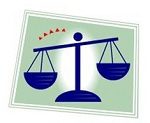
By Pam Martens and Russ Martens: August 15, 2022 ~ Last Thursday evening, Justice Department Attorney General, Merrick Garland, held a brief press conference to announce that he had asked a federal court to unseal the search warrant and inventory receipts filed in connection with the FBI’s search of Donald Trump’s Palm Beach oceanfront home and beach resort, Mar-a- Lago. As part of his statement to the press, Garland said this: “Faithful adherence to the rule of law is the bedrock principle of the Justice Department and of our democracy. Upholding the rule of law means applying the rule of law evenly, without fear or favor.” Unfortunately, the vast majority of Americans believe there is one set of laws for the rich and powerful and another set of laws for average Americans. According to a Gallup poll released on July 5, only 14 percent of Americans had “a great deal” or … Continue reading

